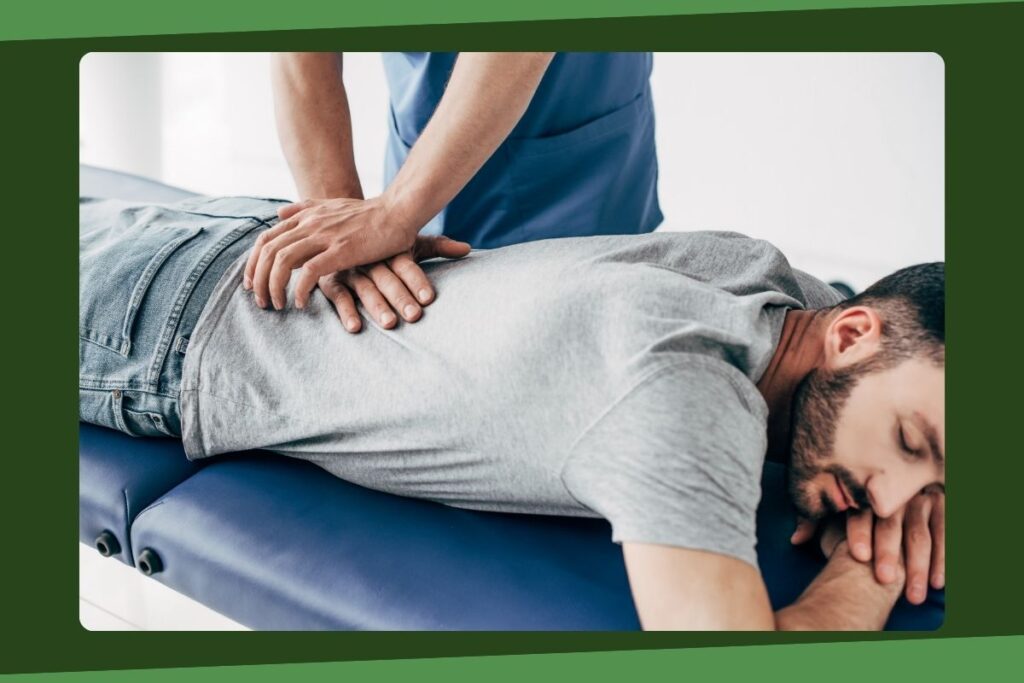Is Spinal Decompression Right for You? Find Out Who Benefits Most
Wiki Article
Discovering Spinal Decompression Strategies: What You Need to Know for Better Spine Treatment
Spinal decompression strategies are vital for people experiencing chronic back pain or spinal concerns. These techniques vary from non-invasive treatments to surgical alternatives, each created to relieve pressure on the spine. Recognizing these strategies is essential for efficient back care. Nevertheless, not all strategies appropriate for every problem. The subtleties behind each approach warrant closer evaluation, as they can substantially influence recuperation and total health outcomes. What elements should one think about prior to choosing?Comprehending Spinal Decompression
Although spinal decompression might appear complex, it fundamentally describes a variety of techniques aimed at minimizing stress on the spinal cable and surrounding nerves. Top Chiropractor. The spinal column is an essential framework that sustains the body and secures crucial neurological paths. When compression takes place, it can bring about discomfort, pain, and reduced mobility. Recognizing spinal decompression entails acknowledging the root causes of this pressure, such as herniated discs, spinal stenosis, or injury. By addressing these underlying problems, decompression techniques look for to recover correct positioning and function. This procedure can include both non-surgical and medical approaches, tailored to individual patient needs. The objective is to improve the lifestyle by alleviating pain, boosting pose, and assisting in much better movement. As recognition of spinal health and wellness grows, the relevance of recognizing spinal decompression ends up being increasingly relevant for those looking for reliable treatment choicesCommon Spinal Decompression Strategies
Spinal decompression methods incorporate a variety of approaches designed to soothe stress on the spinal column and its associated frameworks. These techniques can be extensively classified into medical and non-surgical techniques. Non-surgical approaches include spinal traction, where mild pulling pressures are related to the spinal column, developing room in between vertebrae. This can minimize nerve compression and advertise healing. Chiropractic care adjustments likewise drop under this category, concentrating on realigning the back to improve function.Surgical decompression strategies involve procedures such as laminectomy, where a section of the vertebra is removed to ease pressure on the spinal cable or nerves. Discectomy, one more surgical option, involves the elimination of herniated disc product. Additionally, minimally invasive techniques, like endoscopic discectomy, are getting popularity due to their decreased recovery times. Each method offers a details function and might be picked based on private client demands and the severity of their spinal condition.
Benefits of Spinal Decompression
When considering the different techniques to managing spinal concerns, the benefits of spinal decompression techniques come to be noticeable. These approaches intend to soothe pressure on the spinal discs and nerves, which can reduce pain and enhance overall spinal health. By producing space between vertebrae, decompression promotes improved blood circulation and nutrient circulation to the affected areas, assisting in recovery and recuperation.Additionally, spinal decompression can assist recover the all-natural placement of the spine, potentially decreasing the danger of future injuries. People usually report raised movement and flexibility following treatment, resulting in an enhanced high quality of life. Additionally, the decrease in pressure can reduce symptoms related to problems such as herniated discs, sciatic nerve pain, and spinal stenosis, offering a non-invasive option to more intrusive procedures. Generally, spinal decompression strategies supply a series of restorative and physical benefits, making them a valuable part of comprehensive back treatment.

That Can Take Advantage Of Spinal Decompression?
People struggling with chronic back discomfort, herniated discs, or spinal stenosis may locate substantial relief via spinal decompression methods. This non-invasive therapy can be especially beneficial for those experiencing nerve compression signs, such as prickling, pins and needles, or weak point in the limbs. Athletes recovering from injuries or people with degenerative disc condition may likewise think about spinal decompression as a viable option for discomfort monitoring and improved wheelchair.In addition, candidates for spinal decompression typically consist of those that have not responded well to conventional therapies, such as drugs or physical treatment. It can also function as a choice for patients seeking Chiropractor to prevent surgical intervention. Generally, spinal decompression techniques can offer a restorative choice for various individuals facing spinal issues, assisting them restore a higher quality of life and functional ability. Consulting a healthcare professional is vital to identify the viability of this therapy for specific problems.
Factors to consider and Preventative Measures for Spinal Decompression

The kind of spinal decompression strategy-- whether surgical or non-surgical-- must align with the person's certain condition and total wellness status. Tracking during the procedure is important to attend to any kind of adverse reactions immediately. Patients need to also recognize that spinal decompression is not a one-size-fits-all option; a substantial therapy plan might consist of physical therapy or way of life adjustments to support recovery. Generally, adhering to these safety measures can greatly improve the effectiveness of spinal decompression treatments and promote optimal back health.

Often Asked Concerns
The length of time Does a Normal Spinal Decompression Session Last?
A normal spinal decompression session lasts between 30 to 45 minutes. This period permits excellent therapy while making sure the individual stays comfortable and receives adequate focus to their details spinal problems and needs.Can Spinal Decompression Be Done in the house?
Spinal decompression can be done in the house with certain workouts and tools, such as inversion tables or lumbar braces. However, consultation with a healthcare professional is recommended to guarantee safety and security and performance in specific situations.Is Spinal Decompression Painful?
Spinal decompression is normally not agonizing; nevertheless, individuals may experience light pain or pressure throughout the procedure. Pain degrees can differ based on the individual's problem and the method made use of for decompression.How Lots Of Procedure Are Typically Needed for Relief?
Usually, people might require 6 to 10 sessions of spinal decompression therapy to experience substantial relief (Back Decompression Therapy). The precise number can differ based on individual problems and reactions to therapy, requiring customized examination by medical care professionals.Exist Any Kind Of Age Restrictions for Spinal Decompression?
There are typically no stringent age restrictions for spinal decompression therapy. Suitability might depend on specific wellness conditions and the particular technique used, so assessment with a medical care specialist is advised for personalized advice.Spinal decompression techniques are important for individuals experiencing chronic back pain or spinal issues. Spinal decompression might sound complex, it basically refers to a variety of methods aimed at minimizing pressure on the spinal cord and surrounding nerves. When considering the various approaches to managing spinal concerns, the benefits of spinal decompression techniques come to be noticeable. People experiencing from chronic back discomfort, herniated discs, or spinal constriction may find significant alleviation with spinal decompression techniques. Generally, spinal decompression methods can supply a therapeutic alternative for various individuals facing spinal issues, aiding them restore a greater quality of life and useful ability.
Report this wiki page